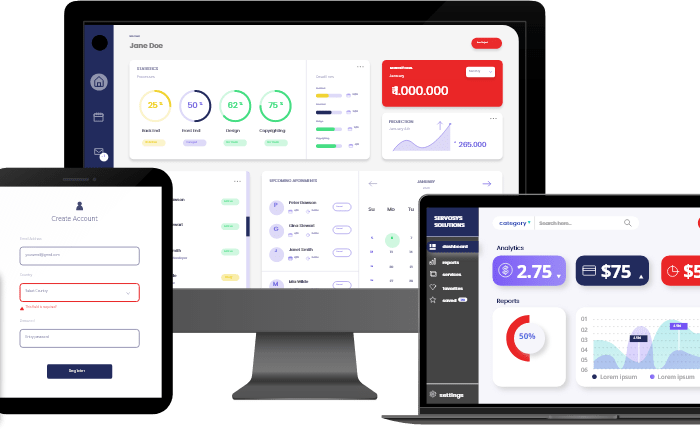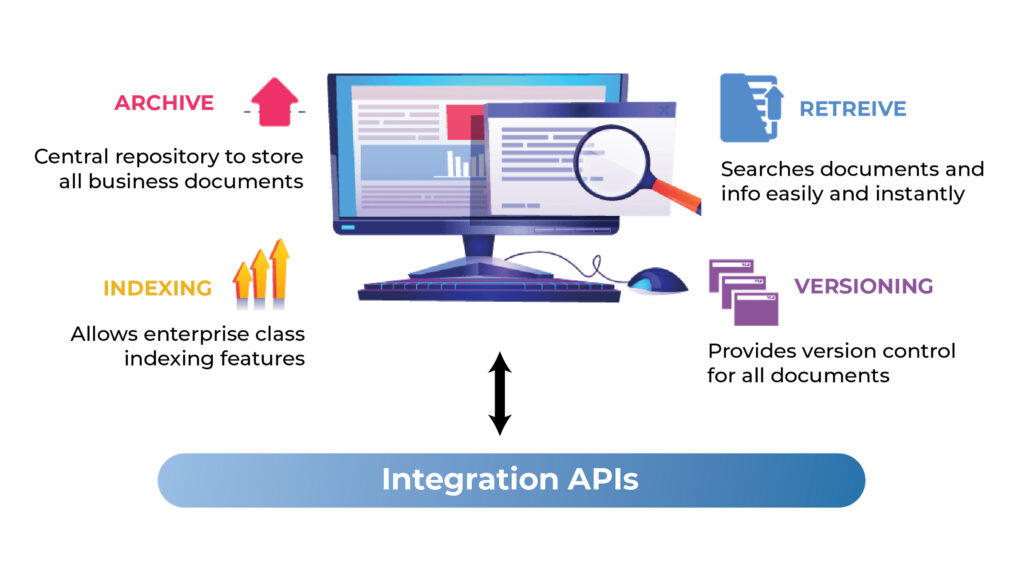
In every large organization today — whether it’s a bank, manufacturing plant, healthcare provider, or energy enterprise — information moves at the speed of operations. Managing that information efficiently, securely, and intelligently is now a business-critical requirement.
That’s where a document management system software (DMS) steps in. Once considered a back-office tool, it has evolved into a strategic enabler for enterprise productivity, compliance, and collaboration.
This article explores what makes a future-ready enterprise document management software, how it drives operational excellence, and why every large organization should invest in it now.
Documents are at the heart of enterprise operations — from contracts, blueprints, and compliance reports to HR files and customer records. But as document volumes grow and regulations tighten, traditional file systems or shared drives fall short.
Modern EDMS software (Electronic Document Management System) goes beyond simple storage. It provides:
A future-ready DMS system software empowers organizations to transform how information flows, ensuring teams collaborate faster, make better decisions, and stay compliant.

To stay ahead in today’s fast-paced environment, your document management software must be built to scale, adapt, and evolve. Here are the key pillars of a future-ready DMS:
Modern enterprises operate across geographies and business units. Cloud-based DMS platforms provide flexible scalability, enabling global teams to access documents anytime, anywhere.
For sectors with strict data policies (like oil & gas or healthcare), hybrid deployment offers the best of both worlds — on-premise control with cloud flexibility.
Data breaches or compliance failures can cost millions and damage brand trust. A future-ready enterprise document management software ensures:
This makes it a dependable backbone for industries where document authenticity and traceability are non-negotiable.
Enterprises rely on multiple systems — from ERP to procurement, HRMS to CRM. A DMS system software should integrate seamlessly through APIs, SFTP, or Web Services.
This integration ensures that documents move automatically within workflows — from vendor contracts to engineering approvals — without duplication or manual intervention.
The future of document management lies in automation.
Modern EDM software uses AI and machine learning to:
This intelligence saves time, reduces human error, and enhances decision-making across departments.
As document repositories expand, finding a single file shouldn’t feel like finding a needle in a haystack.
Future-ready systems enable metadata-based search — allowing users to filter by document type, creator, date, or even content.
For manufacturing or engineering teams, this means retrieving drawings or reports within seconds, not hours.
Enterprises handling millions of files daily — such as oil companies or global manufacturing networks — need systems that don’t slow down under pressure.
A future-ready DMS ensures high performance, redundancy, and uptime, even during massive data uploads or concurrent user access.
A powerful document management system software delivers measurable values across industries. It can be used in:
Manufacturing
Healthcare
Oil & Gas
Banking & Finance
For organizations planning to upgrade or deploy enterprise document management software, here are practical steps to stay ahead:
Tomorrow’s document management isn’t about storing files — it’s about making them work smarter.
AI-powered indexing, predictive analytics, and process automation are reshaping how enterprises handle information.
The best document management software will act as a digital nervous system — connecting departments, securing data, and delivering insights that drive continuous improvement.
Organizations that invest in EDMS software today are not just digitizing their operations — they’re building a foundation for long-term agility, efficiency, and innovation.
FAQs on Enterprise Document Management System
Enterprise-grade DMS software is designed to handle large document volumes, complex workflows, and multi-departmental access. It offers advanced security, scalability, and integration with existing business systems like ERP, CRM, or HRMS.
A DMS automates document routing, approval, and retrieval processes. It reduces manual paperwork, minimizes human errors, and ensures faster decision-making through instant access to records.
Industries like manufacturing, oil & gas, healthcare, BFSI, and logistics gain the most due to their heavy document flows, regulatory needs, and distributed operations.
Modern EDMS software uses AES 256-bit encryption, role-based access, and audit trails. It ensures documents are protected from unauthorized access and tampering — both on-premise and in the cloud.
A DMS focuses on document storage and retrieval, while EDMS (Enterprise Document Management System) adds workflow automation, analytics, and integration layers for enterprise-wide document control.
AI-driven DMS solutions automate document classification, extract metadata, and detect duplicates. They improve compliance accuracy and reduce turnaround time for document-heavy processes.
It depends on your business model. Cloud-based systems offer scalability and remote access, while on-premise DMS ensures full data control — hybrid models provide the best of both.
Focus on features like ease of integration, security standards, workflow automation, compliance readiness, and vendor reliability. Long-term support and customization are also key.
Innovate, simplify, and expand with cutting-edge process automation solution.
Servosys Solutions is a unit of EML Consultancy Services Private Limited, a company headquartered in New Delhi, India. We are one of the fastest-growing providers of software products and technology services for business process automation solutions that address challenges like process turn-around time, organizational productivity, regulatory compliance, business scalability, operational visibility and excellence.
Adding {{itemName}} to cart
Added {{itemName}} to cart